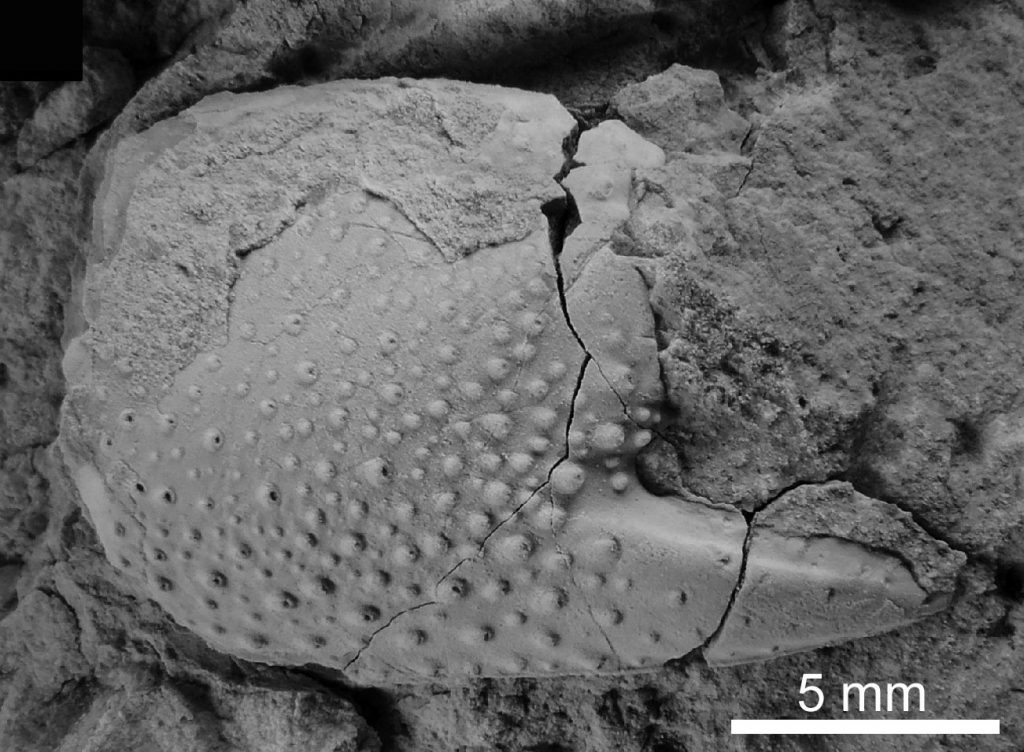Methane seeps are places on the ocean floor where methane escapes from the subsurface into the water column. Such seeps, also called cold seeps, can be found at different depths in the oceans today and in the past. They are essentially the cold equivalent of hydrothermal vents.
Mollusks and a crustacean from early Oligocene methane-seep deposits in the Talara Basin, northern Peru

